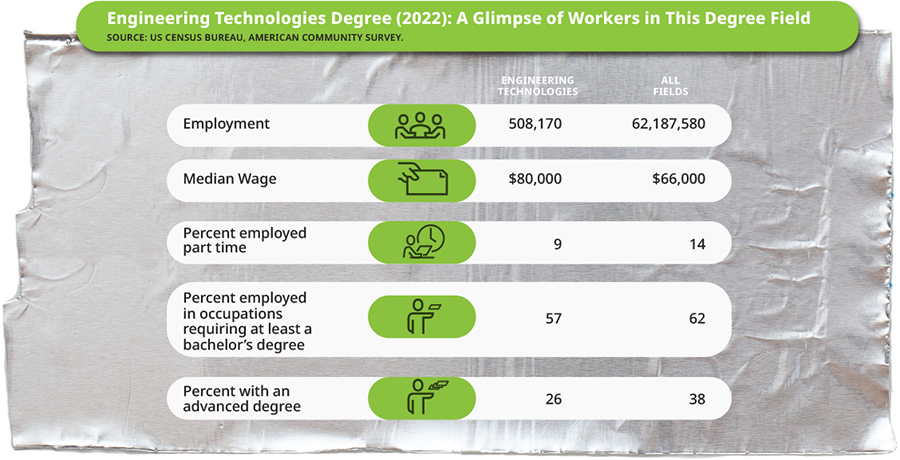Understanding how the brain reacts to various work environments can help engineers become effective leaders in fostering high-performing, motivated teams.
 Engineering is not only about mastering the technical skills required to create innovative solutions; it’s also about leading people effectively. Engineers often spend years refining their technical expertise and many find themselves suddenly faced with the challenges of leadership with little to no formal training. As engineers advance, they’re increasingly tasked with not only leading projects, but leading people—an endeavor that requires a whole new skill set. In this article, we’ll explore insights from neuroscience that can help engineers become effective leaders in fostering high-performing, motivated teams.
Engineering is not only about mastering the technical skills required to create innovative solutions; it’s also about leading people effectively. Engineers often spend years refining their technical expertise and many find themselves suddenly faced with the challenges of leadership with little to no formal training. As engineers advance, they’re increasingly tasked with not only leading projects, but leading people—an endeavor that requires a whole new skill set. In this article, we’ll explore insights from neuroscience that can help engineers become effective leaders in fostering high-performing, motivated teams.
The Brain’s Role in Leadership
Understanding the human brain’s reaction to work environments is a critical, science-backed component of effective leadership. Neuroscience reveals that our brain operates in three distinct areas at work: the threat response, the productivity zone, and the reward zone. Each of these areas influences how we interpret events around us, interact, communicate, and solve problems.
The Threat Response: Our threat response—commonly known as the "fight, flight, or freeze" response— is activated by perceived dangers. While traditionally tied to physical threats, this response is triggered in modern work settings by something as simple as a terse email or an unexpected meeting request, particularly with leaders where there is a short or tenuous relationship. The brain doesn’t distinguish between physical and social threats; both represent potential danger. A brain in the threat zone becomes defensive and narrow-focused, hindering creativity and problem-solving. Leaders must strive to minimize these "threat triggers" to prevent team members from operating in this unproductive state.
The Productivity Zone: The productivity zone allows us to perform routine tasks efficiently. It’s where "autopilot" kicks in, enabling engineers to complete familiar tasks without much conscious thought. It is also the zone that we might leverage to complete "deep work." There are many pros to operating in this zone. The one caveat is that this zone is not where innovation, collaboration, or creative problem-solving occur.
The Reward Zone: The reward zone is where leaders want their teams to spend as much time as possible. Here, team members feel valued, understood, and confident, enhancing their ability to collaborate, innovate, and tackle complex challenges. Leaders can foster this environment by building trust, demonstrating empathy, and recognizing contributions. This ultimately creates a high-performance culture.
The Importance of Trust in Engineering Leadership
Building trust is foundational to any successful leadership model. Research by Ken Blanchard suggests a four-part framework for building trust with team members with the elements of being—Able, Believable, Connected, and Dependable (ABCD). When each of these elements is integrated into leadership practices, teams become more resilient and open to collaboration.
- Able: Engineers are often promoted for their technical expertise. Being knowledgeable and demonstrating sound judgment is essential, but focusing exclusively on technical ability or experience overlooks other important aspects of trust.
Believable: Transparency is key. Leaders should be honest about challenges and successes, as well as remain open to new information. This credibility builds respect and helps team members to believe their leaders have their back. - Connected: Genuine connection involves seeing each team member as a unique individual, beyond their role or tasks. Building positive relationships with people at work and effectively navigating conflict and differing viewpoints is vital for a collaborative work environment.
- Dependable: Consistency is essential for trust. Leaders must follow through on commitments and address any lapses directly, without making excuses. This accountability fosters a secure environment where team members can depend on their leaders.
- Leading Through Change: Building Resilience and Acceptance
 Change can be a significant "threat trigger" for the brain. Predictability is comforting, so even positive changes can create uncertainty and have people on edge. Understanding this dynamic allows leaders to manage change more compassionately and effectively.
Change can be a significant "threat trigger" for the brain. Predictability is comforting, so even positive changes can create uncertainty and have people on edge. Understanding this dynamic allows leaders to manage change more compassionately and effectively.
Most change efforts focus on the systems, processes, and structures of the change with a focus on what will be different for the organization when the change is complete. Many change plans consider what training, or skills will be required for people to be successful throughout the change process. Even with all this thought and planning, many change efforts are not successful. Rather than focusing solely on strategies and systems, engineer-turned-leaders should also consider the human side of change.
The Kubler-Ross Change Curve defines the stages of the human journey we all go through when faced with loss or significant change, including the very real resistance to change and a moment when we are convinced the change will not work. Many updated versions of these models also highlight how leaders can support their team members at each phase to keep them moving through their journey to the point of acceptance and success.
By discussing this expected, human journey through change, leaders help their teams navigate more effectively by acknowledging the discomfort that often accompanies change, likely moment of wanting to give up, and ways team members can support one another 2024to move forward. Celebrating small wins and openly discussing doubts can help the team feel understood and valued. Encouraging team members to expect and embrace setbacks as a natural part of the change process creates a more adaptable culture.
Active Listening and Recognizing Achievements
One of the most powerful ways to engage team members is by truly listening to them. Active listening isn’t about agreeing or waiting for a chance to respond; it’s about understanding the core message being conveyed. When team members feel heard, they are more likely to feel invested in the team’s success and confident in their roles.
Recognition is another crucial component of creating a positive work environment. Neuroscience highlights that recognition and positive feedback activate the brain’s reward circuits, fostering motivation and productivity. While some leaders may assume a paycheck is adequate acknowledgment, the reality is that celebrating efforts and successes—even small ones—can make a significant difference in morale and engagement.
Navigating Generational Differences and Hybrid Work Environments
Modern engineering teams are diverse in many ways, including generational perspectives and work preferences. Each generation will be most comfortable and likely to default to their preferred communication channels and work styles. An engineer leader needs to encourage multi-generational teams to flex into one another to harness the power of each generation. At the same time, working with their team to establish shared expectations around what communication channels to use when, how to effectively navigate conflict, and work norms.
Each generation brings unique strengths to the table. Leaders who recognize and respect these differences can create a more inclusive environment, where each team member feels valued.
With the rise of flexible work, engineers face the challenge of leading teams that span various locations and work styles. Effective communication and adaptability are essential for maintaining a cohesive team dynamic. We see successful teams establishing a shared, online "single source of truth" where people can access important team and client information. Other teams have set up office hours and virtual coworking to encourage more informal interactions. Meeting together, whether in-person or virtually, will always be valuable. At the same time, leaders can also leverage the power of asynchronous work by posting questions and allowing their team members a day or two to reflect and then share their perspectives.
Leaders who learn how to effectively navigate and leverage the benefits of hybrid work to their advantage will be that much more effective in retaining and engaging their team members, no matter what location they work from.
The Value of Emotional Intelligence (EQ) for Engineers
While engineers are often selected for leadership roles based on their technical skills, the shift from individual contributor to leader demands a high degree of emotional intelligence (EQ). Research shows that emotional intelligence is a better predictor of leadership success than IQ in a two-to-one ratio. EQ encompasses self-awareness, empathy, and social skills, all of which help leaders effectively manage relationships and maintain a supportive atmosphere.
Building Self-Awareness: Self-awareness allows leaders to recognize how their actions affect team members, encouraging a reflective approach to leadership. Leaders who understand their strengths and limitations can approach challenges more objectively, setting a positive example for their teams.
 Demonstrating Empathy: Empathy goes beyond simply listening; it’s about understanding and acknowledging team members’ experiences. In a field as rigorous as engineering, the pressures of deadlines and quality standards can be intense. Leaders who empathize with these pressures and support their team’s well-being create a stronger sense of unity and commitment.
Demonstrating Empathy: Empathy goes beyond simply listening; it’s about understanding and acknowledging team members’ experiences. In a field as rigorous as engineering, the pressures of deadlines and quality standards can be intense. Leaders who empathize with these pressures and support their team’s well-being create a stronger sense of unity and commitment.
Why Development Plans Matter
Development plans provide a structured way to support team members’ growth and are instrumental in retention. Career growth opportunities rank just below management relationships as a reason employees stay with or leave their jobs.
Development plans require leaders to understand their team members’ career goals, strengths, existing skills sets and work experiences to cocreate. The mere act of the development plan cocreation and check-in process will have team members feel seen, known, and valued.
To cocreate, leaders should have regular discussions with team members about their short-term and long-term goals. With a better understanding of those goals, an open discussion about the knowledge, skills, or work experiences needed to achieve those goals will provide the information needed to cocreate a development plan. Leaders can then link existing assignments, as well as identify new projects that will help build those knowledge, skills and experience to fuel team member development. This approach shows that leaders are invested in team members’ long-term success, further reinforcing trust and loyalty.
One common misconception is that annual performance goals are the same as development goals. While the two can be related, they are not the same. For example, working towards securing professional engineer credentials would be a development goal. In the process, working under another professional engineer on a project with a client may help to achieve a business or performance goal.
Conclusion: Elevating Engineering Teams Through Neuroscience
As engineers rise to leadership roles, understanding the neuroscience of leading people can provide a valuable edge. By prioritizing trust, promoting active listening, and recognizing achievements, engineering leaders can foster a positive work environment where team members feel engaged and motivated. Building emotional intelligence, maintaining team member trust, embracing generational differences, and encouraging personal development are key to creating high-performing, resilient teams.
Ultimately, engineering leadership is not solely about achieving technical excellence, but also about empowering people to reach their full potential. With these neuroscience-backed strategies, engineers can not only lead more effectively, but also create meaningful, lasting impacts within their organizations.


 Volunteering at NSPE is a great opportunity to grow your professional network and connect with other leaders in the field.
Volunteering at NSPE is a great opportunity to grow your professional network and connect with other leaders in the field. The National Society of Professional Engineers (NSPE) encourages you to explore the resources to cast your vote on election day:
The National Society of Professional Engineers (NSPE) encourages you to explore the resources to cast your vote on election day:










